Shelley Art Group had a session with Cath Brooke yesterday evening and I had a go at making a copy of an etching I did nearly 60 years ago. Everyone produced some interesting work.
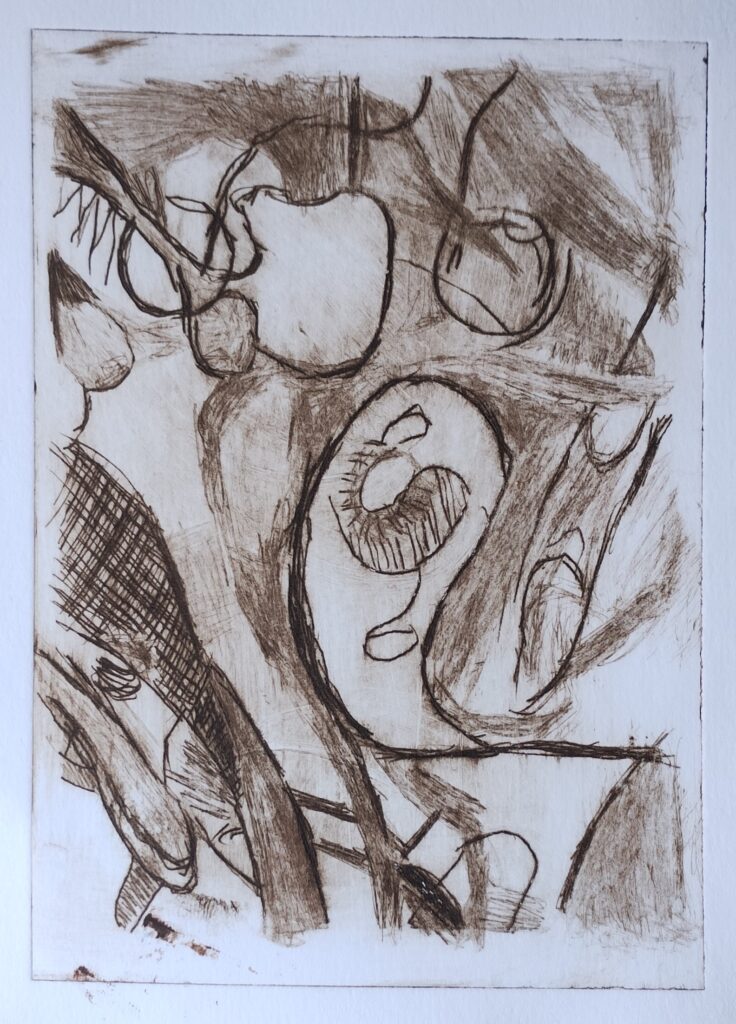
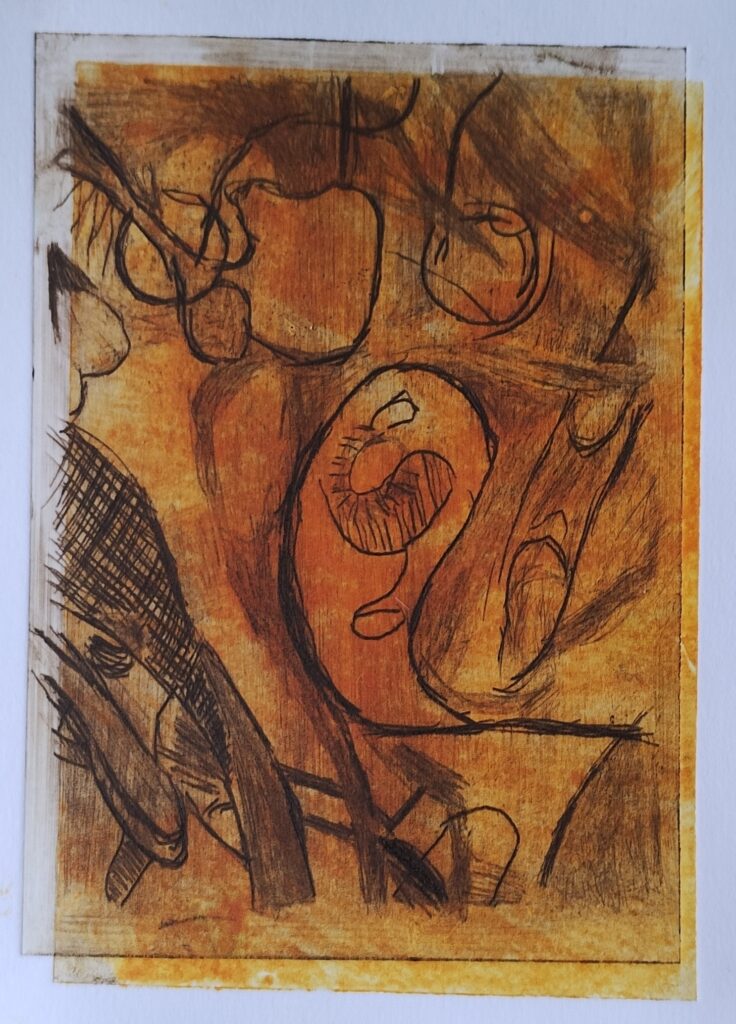
Shelley Art Group had a session with Cath Brooke yesterday evening and I had a go at making a copy of an etching I did nearly 60 years ago. Everyone produced some interesting work.


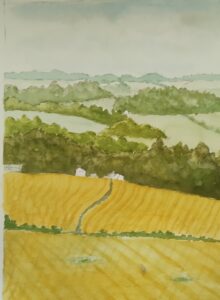
When people are taught to paint landscapes, they will often be told to make things further away tend towards lighter and bluer. Unfortunately sometimes people tend see this as a rule, rather than a painting trick to emulate the effects of distance and atmosphere on colour saturation. There are lots of similar guidelines that can become a hindrance if taken too literally.
If you read about the painter John Constable, you will almost certainly come across the tale of him and Joshua Reynolds, where constable puts a violin on the grass to demonstrate that they are not the same colour, after Reynolds objected to the colours in Constable’s paintings.
When photography came along it changed the way we see things and motion photography even allowed us to see how things actually move for the first time. At the same time photography took away visual art’s dominant role in capturing a likeness for posterity. This in turn allowed artists to investigate other roles for their art. Increasing awareness of science, particularly relating to colour and vision, also gave artists new ideas about how to do their job. There have been many debates in art history about how to do things and some of these relate to vision and how we see and remember the world around us.

If you ever stand in front of a wide open landscape and enjoy looking at it, a temptation is to take a photograph. I’d be pretty surprised if you weren’t often disappointed with the result. All the magnificent detail and sweep of light you see will have been largely lost. Even a sophisticated camera has limitations of focus, whereas we can focus near and far repeatedly and rapidly without really noticing that we are doing it. Most of the time it doesn’t even make us dizzy. The vision we have in our head is then a combination of what we have seen and felt, with special emphasis on all the things we have been most interested in.
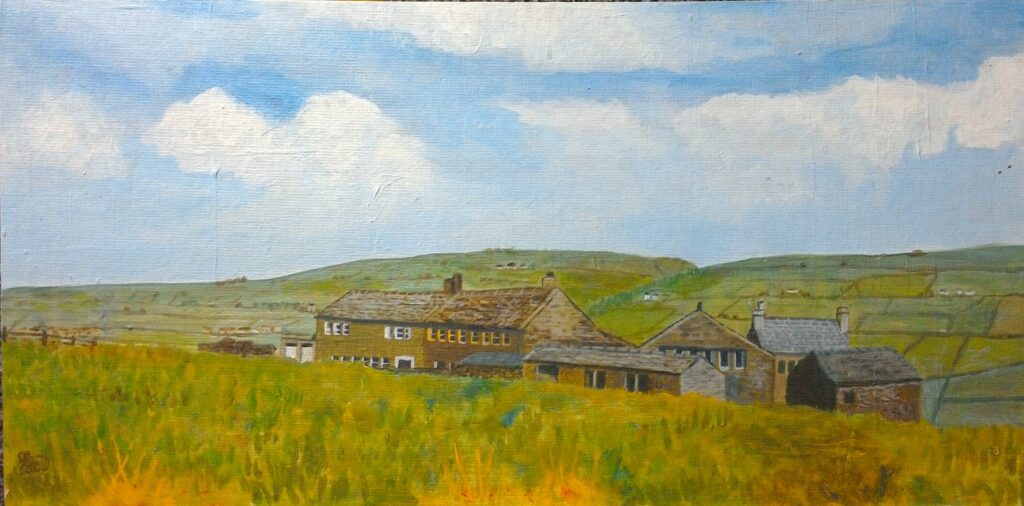
The next element of perception that is important to highlight separately is memory. While our memories are unreliable, they are still ours. We are capable of holding a lot of detail about a scene, as well as host of related generalisations and also feelings. I know of painters who repeat the same scene repeatedly from memory. Each version is different but also alike. Whether intensionally or not, each painting will often be recognisably by the same person.

That last bit about repeating a scene painting also relates to our ability to produce and recognise schematics of things. Every child does it very quickly in their development and even animals are able to do it. Those Captcha tests that have popped up over the last few years, designed to demonstrate your humanity, would be within the capability of a pigeon or crow, as long as they had been taught to associate the schematic with food.
In the pencil sketch below the are no colour hints about what we are seeing and little difference in tone between near and far. In fact the mast at Emley Moor has more definition than it might have in a photograph, representing what we would see by changing our focus temporarily. Within the picture there are plenty of hints about scale and perspective from the lines and objects. The effect is strong enough for us to recognise that the field in the distance is just a different shape, rather than badly drawn.

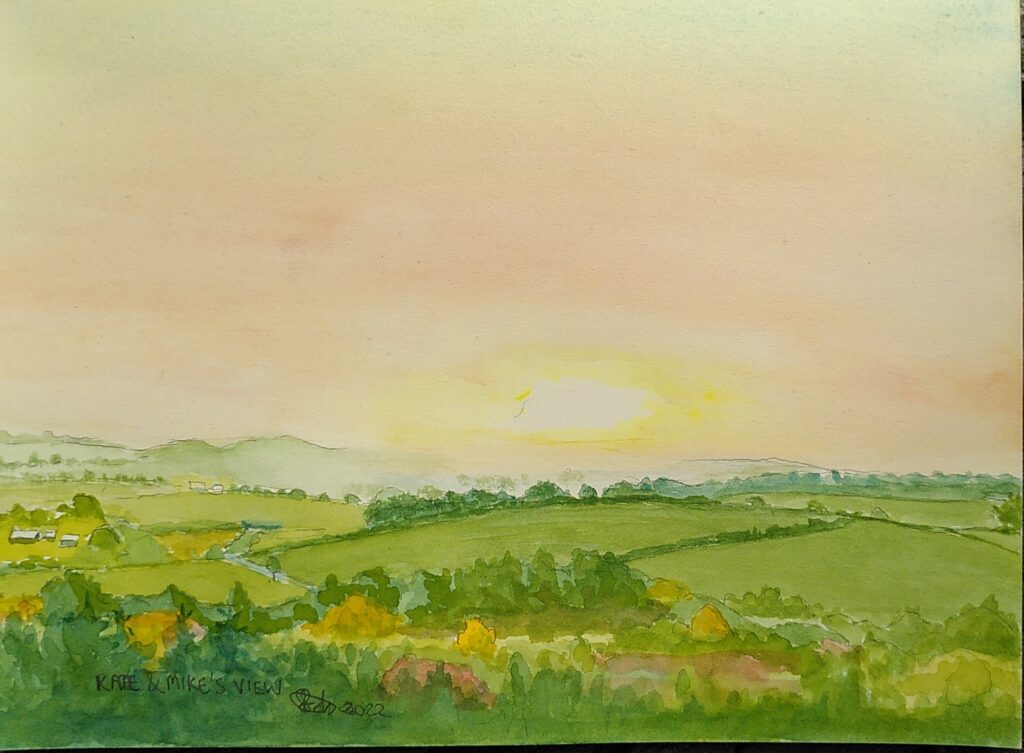
So if you do want to paint a scene, reasonably realistically, for someone, based on a photograph, don’t be afraid to paint it as they might see or remember it. Equally don’t be afraid to represent what you want to represent without being a slave to the myth of realism.

In one way or another, I’ve been studying and doing art and craft for more than sixty years. I’ve also been involved with performance of various kinds, crossing art boundaries. For more than a decade I’ve taken people round the Yorkshire Sculpture Park, on the historic West Bretton Estate and talked to every sort of person, from different parts of the world, about art and history. One of the things I stress to people about YSP is that the park itself is a giant sculpture.

Talking to people has made some things particularly clear to me and below are some key points I have learned.
Art is both subconscious and conscious. Most animals, including us, seem to have a sense of shape and form and also sound. Some of us animals use those senses for display and communication purposes. This means that art can have multiple levels of appeal.
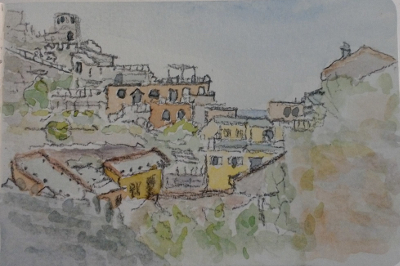
Because art has been around as long as we have it is plain that it is important to us in some way.
Art has never had one particular way of doing things, though there have been plenty of attempts to enforce a particular way.
The separation of art from craft is not really helpful.

Even the best artists never fully achieve what they want, let alone satisfy all the people all the time.
Human competitiveness means that arts are often used to show off and to demonstrate superiority and thus other people’s inferiority. You should never let that last tendency put you off trying out your artistic skills, if you, and even someone else, might get enjoyment from the attempt.

Some people can just control themselves better and practice doesn’t make perfect in such complicated skills. Equally, even with control and practice people can still produce neat, colourful but not very interesting art.
We all borrow ideas from others. It can’t be helped. Children’s art is already full of borrowed ideas and styles but can still have a personal impact without complicated skills. We all have to make a compromise to achieve whatever we want to achieve.

Art can look like something but it doesn’t have to copy that thing completely.
Art can be abstract but that doesn’t mean it can’t also represent something or some idea or emotion.
When you produce any form of art you are representing a subject, an idea. On top of that, what you produce is influenced by all the things and people you have encountered. Those two things should influence the tools you use to produce the art and those tools should influence the art itself.
Art doesn’t have to be pretty. All forms of art can be used to highlight unpleasant things. There are all sorts of messages in art and the art reflects that.
If your art has a particularly strong emphasis on message then it is of little use if only a small number of the already converted pick that message up.
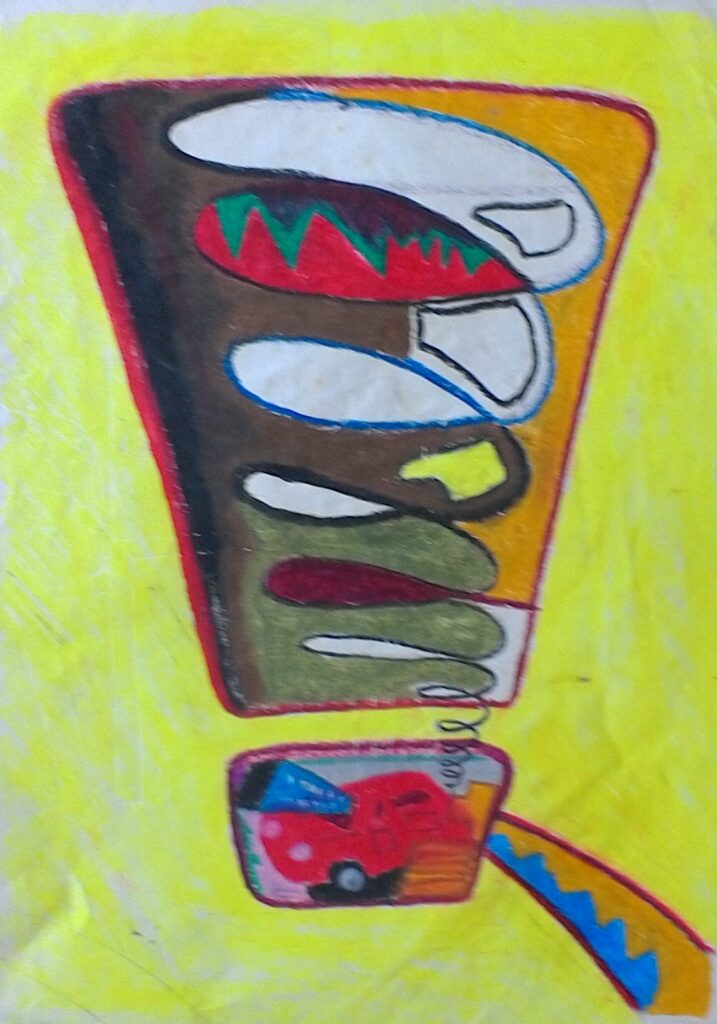
The, never displayed, work above was called ‘Modern Gods and Heroes’. It is a visual rant about cars, overcrowding, shallow celebrity and eco-failure from around forty years ago. The fact that I’m explaining it speaks of its relative failure. That doesn’t mean that art shouldn’t have a title or explanation.
You are right to question the value of art and the need for public funding but think of all the other things that command higher prices than they perhaps deserve.
Keep looking, thinking, enjoying and trying.

I had an accident when I was young that means that I am more aware than many how useful our hands are and what a nuisance it is when you can’t use them properly. I can’t easily use my right hand to pick up or hold things and often use my left to manoeuvre things into place. I have joked that I am half Primate and half not.
The story of opposable thumbs is often one part of how we explain to ourselves how clever we are. I referred to this habit in another post on Anthropomorphism.
I have recently been taking enlarged videos of the birds in our garden, so I have been looking at them more closely than usual. Birds, as you probably know, are basically evolved dinosaurs and, because of their size, only have little brains. Like with the poor Goldfish, people use terms like ‘bird brain’ as insults. In fact birds can see things that are completely invisible to us, have amazing ability to respond to visual signals with physical action at great speed and pigeons can recognise drawings and photos of trees as trees. Birds have also been shown to recognise themselves in a mirror.
So how do birds relate to opposable thumbs? Well some birds have one of the toe/fingers on each foot facing backwards. This gives them advantages in all sorts of situations related to there particular lifestyle, so we are not alone in that ability. In fact there are several species of animals that have similar adaptations.
Whilst I was staring at my hand thinking about this, I realised that the thumb is not the main problem. It is the fact that I can’t control the fingers either. On my left I can touch any one finger to any other. On my right I can’t do that and the only way I can reliably get fingers to touch their neighbour is by curling the hand up so all four touch. Relating that to watching the birds in the garden, I have watched them pick up a seed, place it between their toes, that are also holding the perch and then use their beak and tongue to remove bits of husk and eat the seed inside. I am just jealous, of the dextrous toes, the very useful beak and the ability to bend that way.
So before calling someone a bird brain (you shouldn’t be so insulting anyway), think of trying to make a birds nest. Look at one and think of the dexterity and skill needed to make it. In many ways it is likely that we have flourished because of our inabilities, that have made us have to find other ways of doing things.
I’ve been reading a book where there is much extended and slightly repetitive musing about our experience of Time. Partly because Ruth is currently in a time zone that is thirteen hours ahead of me, I had a think about it. Without getting too technical, I thought I’d put down some thoughts that might clarify for us.
First, we all experience time differently. Usually I seem to do things faster than many people. It doesn’t feel like that when I am doing something but that is often what happens. When I was a student and I was in a lecture where there were copious notes written on the board the opposite would happen. Because I am left handed, I have always written slowly, so I would constantly be trying to catch up and shaking my hand because it hurt. My experience of time varies for me and it differs from everyone else’s. We are all like that.
Second, our experience of time is different to our attempts to measure it. Measurement, naming, the making of formulae to make predictions are all things that scientists and makers use to add levels of control to our lives. Relating this to time, one unit of measurement we use is the Day. This makes sense, though if you live at the poles it is somewhat less useful. The poles are not only difference though. I live at the top of a hill. For me the sun comes up earlier and goes down later than those who live in the valley below me, so their experience is slightly different. In a hot air balloon hovering above me the difference would be even more marked. A wide open plane changes things again.
Having instinctively chosen the day as a time measure we went on to make up all sorts of different measurement units, partly to give us more understanding and control but also to help with communication. Sadly bad communication often happens when people start dreaming or arguing about those units of measurement.
The more people travelled and the more travel speeded up the more important it seemed to unify measurements a bit. Here we come to the International Date Line. This is the arbitrary point at which one day changes to the next. This is where Ruth being thirteen hours ahead comes in. The date line runs down the pacific and wobbles round the few countries it meets, because there are few countries to meet and thus only sparse populations to upset. It is useful, but is the clearest illustration between the experience of time and the measurement of it. When you add in the fact that New Zealand and the UK both change the clocks twice a year and at slightly different times of year, so that there can be 11,12 or 13 hours between us, the wobbliness of the measurement factor is highlighted.
It is also important to realise that it is still Now wherever you are. When I chat to new Zealand we are still chatting at the same time (apart from slight delays for transmission) even though the time of day is different, as is the season, the weather and whatever other experiences surround our chat.
So whether is day, minutes, years, light years, parsecs or any other measure, they are all just measures. Our experience is different to the measuring. In a similar vane, if someone tells you that a table is not actually solid, just smile wisely and say ‘Actually it is solid and thank goodness for all the random, unpredictable behaviours of those sub atomic particles that make it solid to, solid tomorrow and onwards until something changes it.
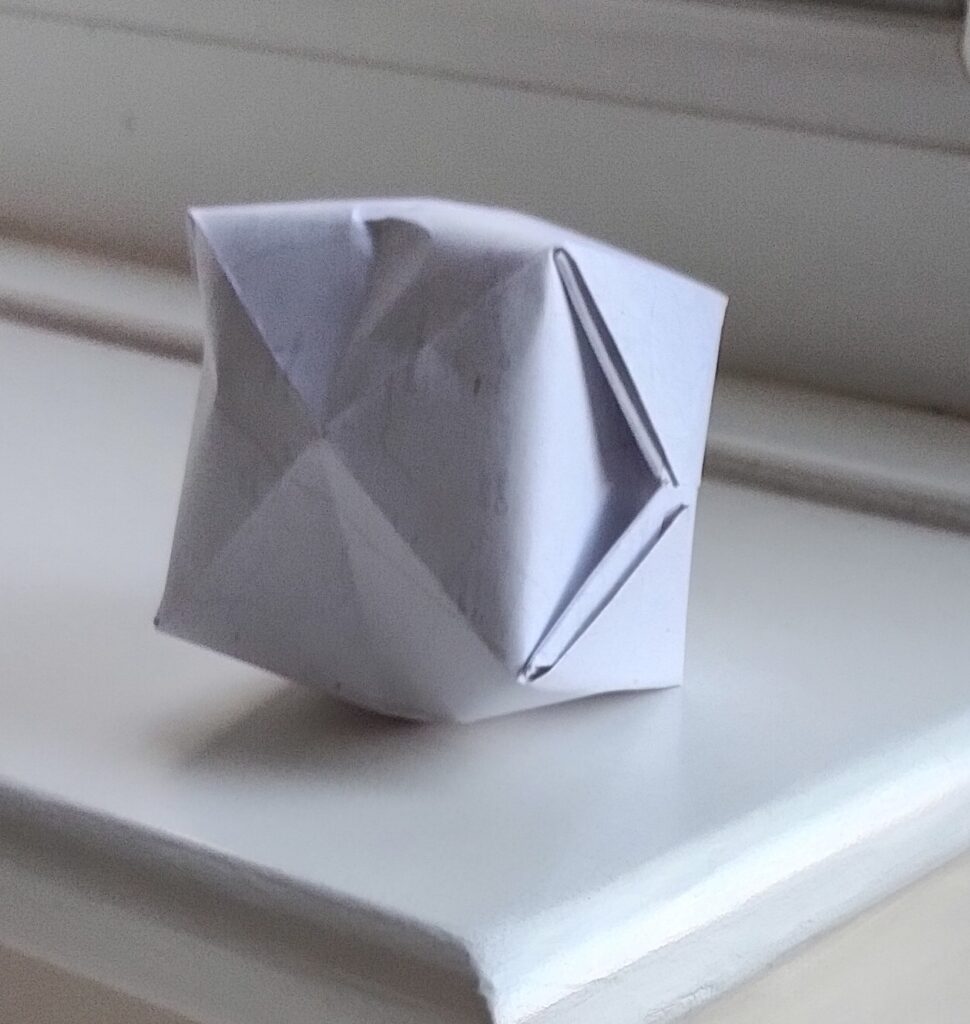
I was around 7 or 8 when a teacher showed us how to make a version of an origami dragon head. It has just occurred to me that I did pretty well to make it, as just over a year before I had an accident that has meant that I can’t use my right hand properly. That aside, origami has been with me since and the most frequently made piece has been the water bomb in the picture. Something appeals about a piece of flat folding that you then blow into and make swell.
Another trick I learned at some point in my life was to raise my arm up, bent at the elbow, so that the palm of my hand was facing upwards just behind the line of my ear. I would then balance a pile of coins on the elbow, fling my arm forward and catch all the coins in my hand. Pretty impressive eh? Actually, like most things, all that is involved is a little natural ability, understanding some ‘tricks’, and some practice.
It is tempting to say that these skills have no value whatsoever but I have entertained people (especially very young people) with them a lot. Also I have seen origami used to demonstrate all sorts of things, such as teamwork, production planning and other business practices. In one such session I noticed that someone who was not naturally skilled at the folding still provided an insight that the more speedy of us could use to get even faster. I have even managed to get a large group of flighty drama students to sit quietly working in groups of four to produce origami swans for a performance piece.
Still, when it comes down to it, these skills are still not that useful. Which brings me to the real point of this. Sadly much human reasoning, and the education practices that support it, are bit like origami. It is a set of skills that can be used in a useful way, but can also be used without real purpose and even quite destructively. One example is what I call Angels on the Head of a Pin reasoning. I don’t know if people have actually debated how many angels you can get on a the head of a pin but a lot of intellectual debate has ben underpinned by such questionable starting points. I would argue that the origami also has more value than much of that debate.
I hope that makes sense.
We’ve had snow, sun, storms and the surprise appearance of new rails in what was the shunting yard. Firstly storm Darragh versus Ellie the wind vane a tenacious trunk tale.
They have been slowly removing more remains from the yard for years, then trees grew up, then they were cut down and the last rolling stock and rails removed. Now they are apparently preparing for electrification and repair and storage area.
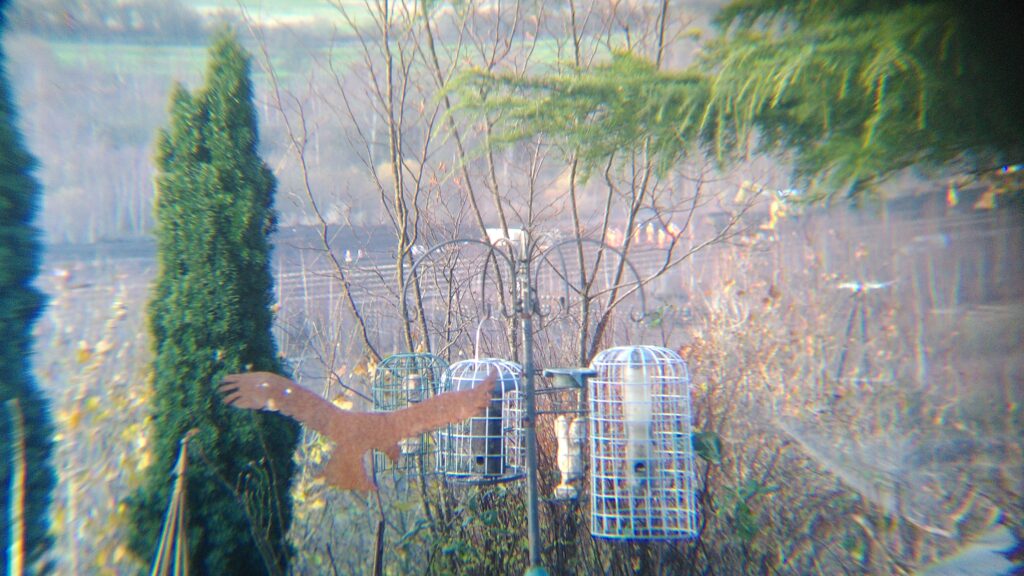
Ruth is visiting her Grandchildren and I am pootling as usual. A few flowers are still hanging on and the Winter Jasmine is coming into its own. We didn’t get round to picking the apples on the slippery hillside tree, so we are getting near the end of this year’s store.
We had a few visitors late on today.
There is tons of work going on in the former shunting yard below. It seems they are putting new rails in, perhaps as part of the upcoming electrification of the line and also to provide a storage area and workshop for rolling stock.





